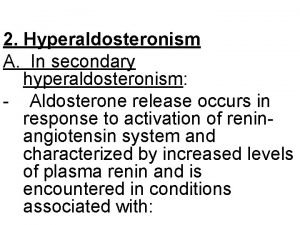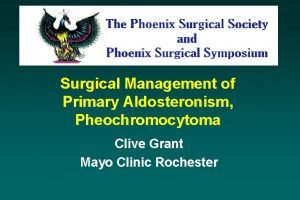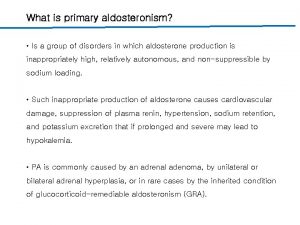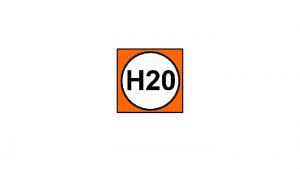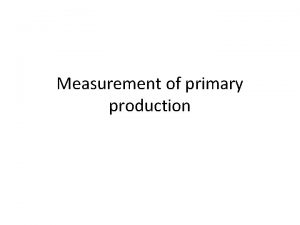Primary Aldosteronism an update on the management Dr



































- Slides: 35

Primary Aldosteronism: an update on the management Dr Man Chi Mei Vivian Queen Mary Hospital

Content • • Background information Diagnostic algorithms Localization and subtype differentiation Management

Case Scenario • 60/M , good past health • Blood test confirmed primary aldosteronism 17 mm right adrenal nodule 7 mm left adrenal nodule

What should be the management? • Adrenalectomy – Right adrenalectomy? – Left adrenalectomy? – Bilateral adrenalectomy? • Medical therapy with aldosterone receptor antagonist

Background • First described in 1954 Jerome W. Conn (1907 -1994) • Group of disorders in which aldosterone production is inappropriately high, relatively autonomous, and nonsuppressible by sodium loading 1 • Estimated prevalence of 11. 2% in hypertensives 2 • Hypokalemia not always present – 52% aldosterone-producing adenoma – 83. 1% bilateral adrenal hyperplasia 1 2 J Clin Endocrinol Metab 93: 3266 -3281, 2008 Rossi et al. JACC vol. 48, No. 11. 2006: 2293 -300

Types of Primary Aldosteronism Types Approximate prevalence % Aldosterone-producing adenoma 30 Bilateral idiopathic hyperaldosteronism 65 Primary adrenal hyperplasia <2 Aldosterone-producing adrenocortical carcinoma 1 Aldosterone-producing ovarian tumor <1 Familial hyperaldosteronism <2 Role for adrenal venous sampling in primary aldosteronism. Young WF et al. Surgery. December 2004.

Diagnosis of primary aldosteronism • Screening – Aldosterone/ renin ratio (ARR) – Plasma aldosterone concentration (PAC) – Elevated ARR >20 ng/dl per ng/ml/h and PAC >10 ng/d. L • Confirmation – Intravenous saline load/ oral salt load – Captopril challenge test – Fludro-cortisone suppression test

Lateralization and subtype differentiation • Computed tomography (CT) • Adrenal scintigraphy • Adrenal venous sampling (AVS)

Computed tomography Young WF et al. The incidentally discovered adrenal mass. New England Journal of Medicine 2007; 356: 601 -10

Adrenocortical adenoma Adrenocortical carcinoma Young WF et al. The incidentally discovered adrenal mass. New England Journal of Medicine 2007; 356: 601 -10

Lateralization and subtype differentiation • Computed tomography (CT) • Adrenal scintigraphy • Adrenal vein sampling (AVS)

Adrenal Scintigraphy • Provides functional information • 131 I-6β-iodomethyl-19 -norcholesterol (NP-59) • Marker of adreno-cortical uptake Huang YE et al. Role of 131 I-NP-59 Adrenal Imaging in Patients of ACTH-Independent Cushing’s Syndrome. Ann Nucl Med Sci 2001; 14: 75 -83

Chen YC et al. Use of NP-59 SPECT/ CT imaging in atypical primary aldosteronism. Q J Med (2013)

Lateralization and subtype differentiation • Computed tomography (CT) • Adrenal scintigraphy • Adrenal venous sampling (AVS)

Adrenal vein sampling • First proposed in 1967 as a test to distinguish between aldosterone-producing adenoma and idiopathic hyperaldosteronism • Gold standard for lateralization of disease • Femoral venous access • Simultaneously left and right adrenal venous sampling • Blood aldosterone and cortisol level Kahn SL et al. Adrenal vein sampling. Techniques in vascular and interventional radiology 13: 110 -125

Interpretation • Confirmation of correct position of adrenal catheters: – Cortisol level from adrenal catheters being 5 -10 times the value obtained from peripheral sheath • Asymmetrical aldosterone: cortisol values on the affected side being 3 -5 times the value obtained from the unaffected side Kahn SL et al. Adrenal vein sampling. Techniques in vascular and interventional radiology 13: 110 -125

Left adrenal vein catheterization Right adrenal vein catheterization Kahn SL et al. Adrenal vein sampling. Techniques in vascular and interventional radiology 13: 110 -125 Lau JHG et al. Clinical Endocrinology (2010) 76; 182 -188

Diagnostic values and accuracy • 203 patients were selected for AVS from 19902003 • 194 patients underwent successful adrenal vein cannulation – Success rate 95. 6% • Computed tomography, AVS and histopathological findings were compared Young WF et al. Role of adrenal venous sampling in primary aldosteronism. Surgery 2004; 136: 1227 -35

Discordant between CT and AVS • 110 patients (56. 7%) had unilateral source for aldosterone hyper-secretion Normal CT scan 24 Bilateral micronodule 16 Bilateral macronodule 2 Unilateral micronodule 7/31 contralateral gland Unilateral macronodule 1/22 contralateral gland Combination of micronodule and macronodule 11/18 macronodule 4/18 micronodule Young WF et al. Role of adrenal venous sampling in primary aldosteronism. Surgery 2004; 136: 1227 -35

Discordant between CT and AVS • 21. 7% (42 patients) would have been incorrectly excluded as candidates for adrenalectomy • 24. 7% (48 patients) might have unnecessary or inappropriate adrenalectomy Young WF et al. Role of adrenal venous sampling in primary aldosteronism. Surgery 2004; 136: 1227 -35

Discordant between CT/MRI and AVS • Systematic review of 38 studies, 950 patients included – 37. 8% discordance between CT/MRI and AVS – 14. 6% inappropriate adrenalectomy – 19. 1% inappropriate exclusion from adrenalectomy – 3. 9% adrenalectomy on wrong side Kempers MJE et al. Systematic Review: Diagnostic Procedures to Differentiate Unilateral From Bilateral Adrenal Abnormality in Primary Aldosteronism. Annals of Internal Medicine, 09/2009, Volume 151, Issue 5, pp. 329 - 337

Computed tomography Adrenal venous sampling NP-59 adrenal scintigraphy • Easily available • Technically demanding • expertise required • Requirement of radiolabeled material • 3 -5 day test • Non-invasive • Invasive • complication rate ~2. 5%3 • Non-invasive • Good resolution • Limited spatial resolution • Improved with NP-59 SPECT/CT • Sensitivity 77%1 • Specificity 80%1 • Accuracy improved if discrete unilateral macronodule 1. 2. 3. 4. • Sensitivity 95%4 • Specificity 100%4 • Planar scintigraphy sensitivity as low as 40%2 • Sensitivity increased to 81. 8% when combined with CT 2 Lau JHG et al. Clinical Endocrinology (2010) 76; 182 -188 Yen RF et al. The Journal of Nuclear Medicine (2009) 50; 10: 1631 -1637 Young WF et al. Surgery (2004) 136; 6; 1227 -1234 Tsai YS et al. Formos J Endocrin Metab 2011; 2(2): 38 -43

Kahn SL et al. Adrenal vein sampling. Techniques in vascular and interventional radiology 13: 110 -125

Management • Bilateral idiopathic hyperaldosteronism – Medical treatment: aldosterone receptor antagonist – Intolerance/ refractory cases: bilateral adrenalectomy • Aldosterone producing adenoma • Primary adrenal hyperplasia – Adrenalectomy (laparoscopic/ open) • Emerging therapies: – Acetic acid injection – Radiofrequency ablation Moo TA et al. Prediction of Successful Outcome in Patients with Primary Aldosteronism. Current treatment options in oncology (2007) 8: 314 -321

Back to our patient • Adrenal to peripheral cortisol level: – Right side: 3. 6 versus left side: 3. 2 • Lateralization index 7. 4 – Right side: 42 versus left side: 5. 7 • Right adrenalectomy performed and Conn’s adenoma confirmed • Improvement in ARR one month after operation

Conclusion • Primary aldosteronism is frequently underdiagnosed in hypertensives • Aldosterone producing adenoma and bilateral idiopathic hyperaldosteronism are two commonest causes of primary aldosteronism • Lateralization is important for identification of surgically-amendable causes

Reference • Galati SJ et al. Primary aldosteronism: emerging trends. Trends in Endocrinology and Metabolism. September 2013, Vol. 24, No. 9 • Role for adrenal venous sampling in primary aldosteronism. Young WF et al. Surgery. December 2004. • Schwatz et al. Screening for primary aldosteronism in essential hypertension: Diagnostic accuracy of the ratio of plasma aldosterone concentration to plasma renin activity. Clinical Chemistry. 51: 2. 386394 • Young WF et al. The incidentally discovered adrenal mass. New England Journal of Medicine 2007; 356: 601 -10 • Kahn SL et al. Adrenal vein sampling. Techniques in vascular and interventional radiology 13: 110 -125 • Huang YE et al. Role of 131 I-NP-59 Adrenal Imaging in Patients of ACTH-Independent Cushing’s Syndrome. Ann Nucl Med Sci 2001; 14: 75 -83 • Chen YC et al. Use of NP-59 SPECT/ CT imaging in atypical primary aldosteronism. Q J Med (2013)

• • Rossi GP et al. A Prospective Study of the Prevalence of Primary Aldosteronism in 1125 Hypertensive Patients. JACC vol 48, No 11, 2006 Moo TA et al. Prediction of Successful Outcome in Patients with Primary Aldosteronism. Current treatment options in oncology (2007) 8: 314 -321 Stowasser M et al. Update in Primary aldosteronism. J Clin Endocrinol Metab (2009) 94: 3623 -3630 Liu SYW et al. Radiofrequency ablation for benign aldosterone-producing adenoma: a scarless technique to an old disease. Annals of Surgery 256(6): 1058 -1064 Kempers MJE et al. Systematic Review: Diagnostic Procedures to Differentiate Unilateral From Bilateral Adrenal Abnormality in Primary Aldosteronism. Annals of Internal Medicine, 09/2009, Volume 151, Issue 5, pp. 329 - 337 American Association of Clinical Endocrinologists and American Association of Endocrine Surgeons Medical Guidelines for the Management of Adrenal Incidentalomas The Endocrine Society’s Clinical Guidelines. J Clin Endocrinol Metab 93: 3266 -3281, 2008

Thank you Questions?


Who should be screened? • Moderate to severe hypertension • Resistant hypertension • Hypertension with a family history of early-onset disease • Hypertension with an adrenal incidentaloma • History of cerebrovascular accident occurring before age 40 years • First-degree relative with primary aldosteronism Galati SJ et al. Primary aldosteronism: emerging trends. Trends in Endocrinology and Metabolism. September 2013, Vol. 24, No. 9

Sequelae of primary aldosteronism Galati SJ et al. Primary aldosteronism: emerging trends. Trends in Endocrinology and Metabolism. September 2013, Vol. 24, No. 9

Protocol Intravenous saline • Infusion of 2 L of 0. 9% normal load saline over 2 hours • In recumbent position Interpretation PAC > 10 ng/d. L post-infusion is highly suggestive of PA Oral salt load • Sodium intake >6 g/day for 3 days with diet and sodium chloride tabs 24 hour urinary aldosterone excretion >12μg/day consistent with PA Captopril challenge test • 25 -50 mg oral captopril after sitting or standing for 1 hour ARR >30 -50 PAC remained elevated (>8. 5 ng/d. L or greater) Renin remained suppressed Fludro-cortisone suppression test • 0. 1 mg of fludro-cortisone every 6 hours for 4 days PAC > 6 ng/d. L confirms PA Renin suppressed to <1 ng/m. L/h Cortisol measured 10 am lower than measured 7 -8 am Galati SJ et al. Primary aldosteronism: emerging trends. Trends in Endocrinology and Metabolism. September 2013, Vol. 24, No. 9


Drug therapy Drug free Optimum ratio 95%CI 12. 4 (7. 1 – 16. 6) 14. 9 (14. 2 – 20. 9) Sensitivity 95%CI 73 87 Specificity 95%CI 74 75 Schwatz et al. Screening for primary aldosteronism in essential hypertension: Diagnostic accuracy of the ratio of plasma aldosterone concentration to plasma renin activity. Clinical Chemistry. 51: 2. 386 -394
 Primary aldosteronism
Primary aldosteronism Oligomenorrea
Oligomenorrea Hyperaldosteronism
Hyperaldosteronism Which is an alternative of log based recovery
Which is an alternative of log based recovery Hình ảnh bộ gõ cơ thể búng tay
Hình ảnh bộ gõ cơ thể búng tay Bổ thể
Bổ thể Tỉ lệ cơ thể trẻ em
Tỉ lệ cơ thể trẻ em Voi kéo gỗ như thế nào
Voi kéo gỗ như thế nào Tư thế worm breton
Tư thế worm breton Chúa sống lại
Chúa sống lại Các môn thể thao bắt đầu bằng từ đua
Các môn thể thao bắt đầu bằng từ đua Thế nào là hệ số cao nhất
Thế nào là hệ số cao nhất Các châu lục và đại dương trên thế giới
Các châu lục và đại dương trên thế giới Cong thức tính động năng
Cong thức tính động năng Trời xanh đây là của chúng ta thể thơ
Trời xanh đây là của chúng ta thể thơ Mật thư tọa độ 5x5
Mật thư tọa độ 5x5 101012 bằng
101012 bằng Phản ứng thế ankan
Phản ứng thế ankan Các châu lục và đại dương trên thế giới
Các châu lục và đại dương trên thế giới Thể thơ truyền thống
Thể thơ truyền thống Quá trình desamine hóa có thể tạo ra
Quá trình desamine hóa có thể tạo ra Một số thể thơ truyền thống
Một số thể thơ truyền thống Cái miệng xinh xinh thế chỉ nói điều hay thôi
Cái miệng xinh xinh thế chỉ nói điều hay thôi Vẽ hình chiếu vuông góc của vật thể sau
Vẽ hình chiếu vuông góc của vật thể sau Nguyên nhân của sự mỏi cơ sinh 8
Nguyên nhân của sự mỏi cơ sinh 8 đặc điểm cơ thể của người tối cổ
đặc điểm cơ thể của người tối cổ V cc cc
V cc cc Vẽ hình chiếu đứng bằng cạnh của vật thể
Vẽ hình chiếu đứng bằng cạnh của vật thể Tia chieu sa te
Tia chieu sa te Thẻ vin
Thẻ vin đại từ thay thế
đại từ thay thế điện thế nghỉ
điện thế nghỉ Tư thế ngồi viết
Tư thế ngồi viết Diễn thế sinh thái là
Diễn thế sinh thái là Dạng đột biến một nhiễm là
Dạng đột biến một nhiễm là


